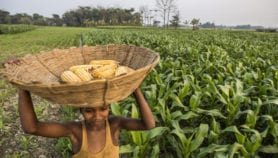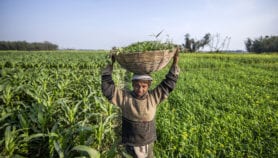By: Catherine Brahic
Send to a friend
The details you provide on this page will not be used to send unsolicited email, and will not be sold to a 3rd party. See privacy policy.
Developing countries are playing an important role in the expansion of genetically modified (GM) crops, and are set to play an increasingly important role both in growing and researching the plants in the next ten years, says a report from the Council for Biotechnology Information.
The Global Diffusion of Plant Biotechnology 2004 report shows that over the past decade, the fastest growth of GM crops has been in developing countries.
Globally, planting of GM crops has increased at an annual rate of 15 per cent since they were first introduced in the mid-1990s, says the UN Food and Agriculture Organisation (FAO). If this rate were sustained, the global market would reach US$210 billion by 2014, nearly a five-fold increase from its current US$44 billion value.
In its report, the Council for Biotechnology argues that developing nations stand to benefit most from this growth. It says the gross domestic product of poor nations adopting GM crops could increase by as much as two per cent by 2014.
Prabhu Pingali and Terri Raney of the FAO's Agricultural and Development Economics Division, told SciDev.Net that sustaining the 15 per cent growth rate would depend on the development of new crops meeting the needs of developing nations, and on ensuring such countries can access and adopt them.
Soybean, maize, cotton and canola currently make up the majority of the GM crop market. But the research community is working on several other crops, including rice, and traits such as drought- and salinity- tolerance that could be very useful to farmers in the developing world.
"The biggest question, however, is whether these solutions will receive regulatory approval and consumer acceptance," say Pingali and Raney.
Many developing nations are producing GM crops even though they have yet to adopt formal legislation to regulate their production and commercialisation.
For instance, the Brazilian senate approved a bill in October that would legalise planting GM crops (see Brazilian Senate approves biosafety law), even though GM soybean, maize and cotton are already being planted in parts of the country.
Other developing nations are hesitant to adopt GM crops for fear that such a move would limit their capacity to export to the European Union, where some member states remain hesitant to fully adopt GM crops.
According to Council for Biotechnology Information's report, nearly one-third of the global area planted with GM crops is in developing nations and a similar proportion of the global GM crop market is held by those nations.
The report says "there is reason to expect
The study also says
Prabhu Pingali is director of the FAO's Agricultural and Development Economics Division and Terri Raney edited the organisation's State of
Read more about GM crops in SciDev.Net's GM crops dossier.
Link to full Global Diffusion of Plant Biotechnology: International Adoption and Research in 2004 (PDF)













